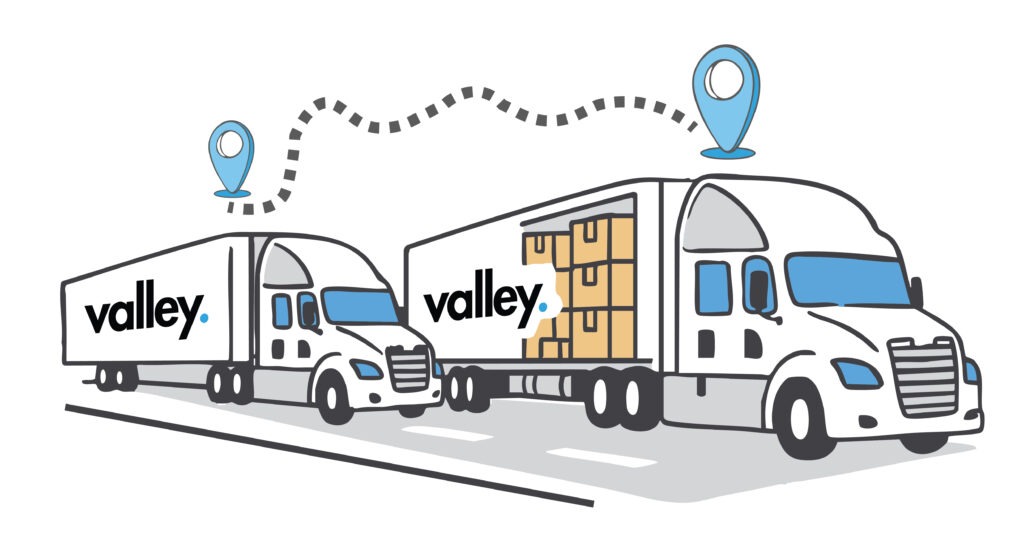The Empty Mile Problem: How to Stop Hauling Air

Every fleet knows that gas is expensive, but one of the biggest hidden costs in trucking is not just at the pump, it’s the empty mile. One out of every four miles is run without a load. That means fleets are using up fuel, paying drivers, and breaking down equipment without making any money.
It’s like paying rent on a warehouse that has nothing in it.
When One in Four Miles Earns Nothing
A few empty trips may not seem like much, but they add up over time and cost you money. Consider a fleet of 50 trucks, each of which drives 100,000 miles a year. That means 1.25 million miles are not making any money if 25% of those miles are empty. That costs more than $2 million a year, or $1.80 per mile.
Research in the field shows that this is a common problem. According to research, between 20 and 35 percent of all truck miles in the U.S. are driven without any cargo. Uber Freight discovered that better planning could cut empty miles by almost two-thirds. This would lower total driver miles by almost a quarter and put millions back into company margins.
Turning Air Into Opportunity
The good news is that empty miles don’t have to happen. A freight-matching network connected a Midwest carrier to live loads in real time. They cut the number of empty miles from 28% to 12% in just six months. They made $1.2 million more with that one change, and they didn’t have to buy new trucks or hire new drivers.
Planning, not luck, is what cuts down on empty miles. Fleets can turn wasted miles into profitable ones by building stronger partnerships, keeping lanes balanced, and using smarter tools.
How to Reduce Empty Miles
Carriers don’t need to completely change their systems to start seeing results. Small changes make a big difference:
- Join networks that match freight: Link trucks to loads that are available right away to cut down on trips that aren’t needed.
- Keep the amount of freight coming in and going out even: Check your most important lanes and match return loads to avoid empty runs.
- Make ties with shippers stronger: Long-term relationships make backhauls more stable and less likely to have gaps.
- Think about weak lanes again: Find routes that always lead to empty returns and change how you bid.
- Reward efficiency: Giving dispatch teams incentives for fewer empty trips makes them more responsible.
- Don’t look back, look ahead: Use tools that predict demand to get ready for gaps before they happen.
Why Fewer Empty Miles Strengthen the Business
Cutting down on empty miles does more than just boost sales. It makes every part of the business stronger:
- Lower costs: Better bids and higher margins without lowering rates.
- More load capacity: the same trucks and drivers could move more freight.
- Better relationships with customers: Shippers like carriers who deliver quickly and reliably.
- More environmentally friendly: Fewer wasted miles mean lower emissions, which is something many customers now want.
- Less risk: Every mile comes with the chance of an accident, a breakdown, or a claim. Fewer empty miles means less exposure without losing capacity.
FAQs on Empty Miles
What do empty miles mean in trucking?
- Deadhead miles, or empty miles, are the distances that a truck travels without carrying a load. They make money without bringing in money.
How often do empty miles happen?
- According to research in the trucking industry, 20% to 35% of all truck miles in the U.S. are empty. This varies by region and fleet size.
What makes empty miles a problem?
- They cost more, cut into profits, put unnecessary wear and tear on trucks, and waste drivers’ time that could be spent making money.
How can fleets cut down on empty miles?
- Joining freight-matching networks, balancing lanes, and using predictive planning tools can help you find better routes that make more money and waste less time.
Do smaller fleets have a harder time with empty miles?
- Yes. Smaller fleets often don’t have steady contracts, which makes it harder to get consistent backhauls. But modern load boards and partnerships can help fill the gap.
Making Every Mile Count
Empty miles have been a problem for truckers for a long time, but fleets today have better tools than ever to deal with them. If you plan ahead, use data, and work with the right people, you can turn wasted miles into miles that make money.
Every empty mile means lost money, and every loaded mile means a chance. The sooner fleets take steps to cut down on waste, the sooner they can protect their profits, boost their efficiency, and lower their risks. It’s time to look over your lanes, make your dispatch plan more efficient, and set up systems that turn air into money.
